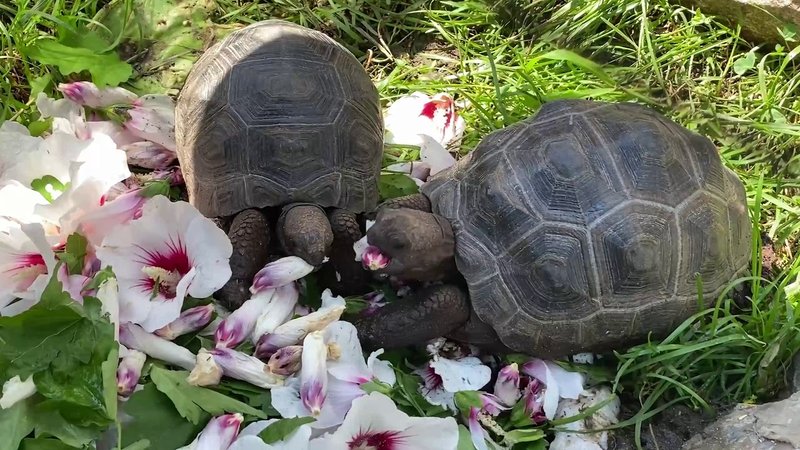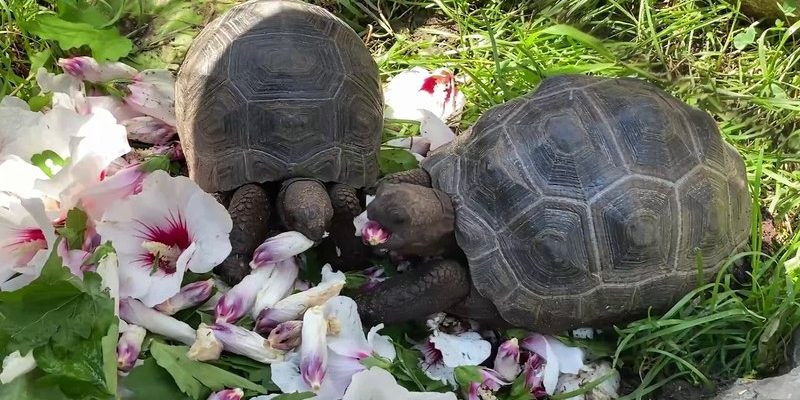
Raising young tortoises is not just about laying eggs and walking away. There’s a whole world of care, survival, and instinct involved. As we dive into this topic, you’ll see how these intriguing reptiles manage to protect and nurture their younglings in the wild. So, grab your favorite drink, sit back, and let’s explore the incredible parenting journey of the Aldabra giant tortoise!
The Nesting Process
When it comes time for an Aldabra giant tortoise to lay her eggs, she becomes quite the master planner. First, she sets out to find the perfect spot. This isn’t just a random choice. Tortoises are instinctively drawn to sandy areas where the soil is easy to dig. You might think of it like picking the right location for a new home – it has to be safe, snug, and supportive of what’s to come.
Once she picks a place, she uses her strong legs to dig a hole about 12 inches deep. This is not a fast process. Honestly, it can take her several hours to create a secure nest. After laying anywhere from 5 to 25 eggs, she covers them with the sand and returns to her daily life, leaving her eggs to incubate naturally. Nature does its magic here—the sun warms the sand, helping the eggs develop, while the natural camouflage keeps them hidden from potential predators.
Why Location Matters
You might be wondering why the choice of location is so crucial. The safety of the nest can make or break the survival of the hatchlings. Tortoises often choose spots that are away from busy animal activity, increasing the chances of a peaceful incubation. Predators like mongooses and birds can sniff out a tortoise nest from a distance, so a thoughtfully chosen site can mean the difference between life and death for the tiny tortoises waiting to emerge.
Hatching and First Moments
After several months of waiting—around 4 to 8 months, to be exact—the tortoise eggs start to hatch. It’s quite a sight! Baby tortoises are equipped with an egg tooth, a small protrusion on their beak, which helps them break free from their shells. This process is like a mini marathon for them; they might take hours to fully emerge from their shells, using all that effort to stretch their tiny limbs and soak in their surroundings.
Once they’re out, these little guys are on their own right from the start. Talk about independence! Unlike many animals that stick close to their parents for some time, baby tortoises are instinctively drawn to find food and shelter. They look for soft plants and grasses, nibbling away while constantly scanning for any signs of danger.
The Importance of Instinct
You might think, “How do these tiny creatures know what to do?” It’s all about instinct. From the moment they hatch, baby Aldabra tortoises are programmed to survive. This intrinsic behavior is vital because they have no parental guidance after hatching. They need to be quick learners and adapt to their environment in order to thrive.
Survival in the Wild
Once they’ve hatched, the real adventure begins. The young tortoises must navigate through their habitat, which can be challenging. They face various threats, including larger animals and harsh weather conditions. Their hard shells, while excellent for protection, don’t offer much mobility, so they have to be smart about where they roam.
Being smaller than their adult counterparts means they have a few advantages as well. For instance, they can squeeze into tighter spaces to avoid predators. They often seek shelter under bushes or amongst rocks when danger lurks nearby. This behavior ensures they stay safe while still searching for food.
Understanding Social Interactions
Interestingly, baby tortoises do not form social groups. They are solitary creatures, which may seem lonely, but this independence allows them to grow without the stress of competition with siblings. Often, they have to fend for themselves in their quest for survival. They learn to use their environment to their advantage, developing skills that will serve them well as they grow.
Challenges They Face
Even with their natural instincts, young Aldabra giant tortoises face several challenges that can impact their survival rates. Habitat loss due to human activity is one of the biggest threats. As humans expand their territories and alter landscapes, tortoises lose their nesting and feeding grounds. Additionally, climate change affects the temperatures of their habitats, which can impact egg incubation success rates.
Predation is another significant challenge, especially for young hatchlings. Birds, rodents, and even other larger tortoises can pose a threat. Awareness of their surroundings and the ability to hide becomes a young tortoise’s best defense.
Conservation Efforts
Fortunately, there are ongoing conservation efforts aimed at protecting these magnificent creatures. Organizations work tirelessly to preserve their habitats and monitor populations. Breeding programs, which often involve protecting nests and ensuring hatchlings have safe places to grow, help boost their numbers in the wild. Every action counts in the fight to ensure future generations of Aldabra giant tortoises can thrive in their natural environment.
Growing Up to Be Giants
As the baby tortoises grow, they start to develop their unique personalities. It’s fascinating to think about how their experiences shape them. These creatures can live over 100 years, and they develop slowly, maturing over decades. They’ll continue to navigate through life, searching for food and learning about their world.
Once they reach maturity, they’ll grow to be massive—reaching weights of up to 550 pounds. They have a remarkable longevity, and once they reach adulthood, they enjoy fewer predators and the freedom to roam their islands without worry.
The Legacy of Aldabra Tortoises
Raising young tortoises is just one part of a larger story. The life of an Aldabra giant tortoise is rich with experiences, struggles, and triumphs. By understanding how they raise their young in the wild, we can appreciate not only their incredible adaptations and instincts but also the importance of protecting their habitats. With every effort made toward conservation, we ensure that these remarkable creatures continue to thrive for generations to come.
In conclusion, the journey of the Aldabra giant tortoise from egg to adulthood is a testament to the resilience of nature. With their unique nesting practices, instinctual behaviors, and challenges faced in the wild, these tortoises reveal just how intricate and beautiful life can be. So, the next time you think about these gentle giants, remember the efforts involved in their survival and the importance of protecting their world.

